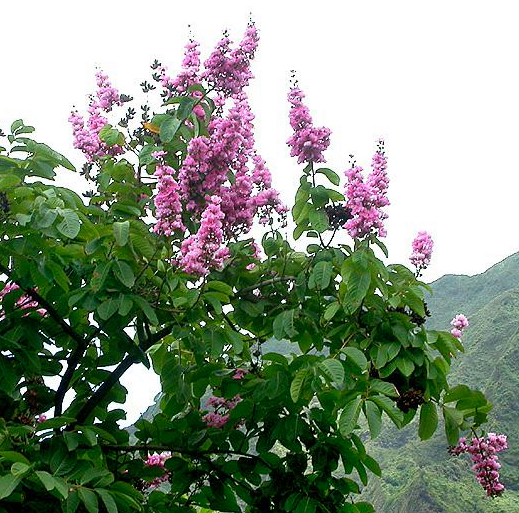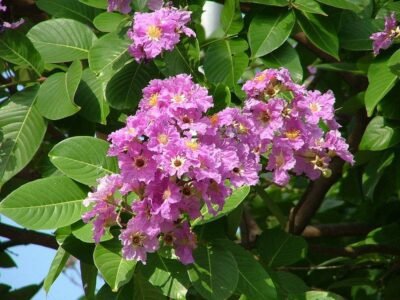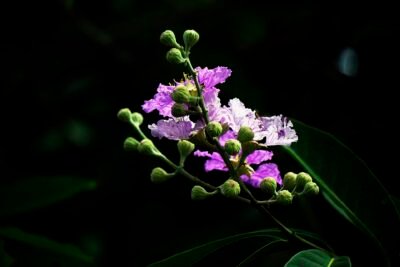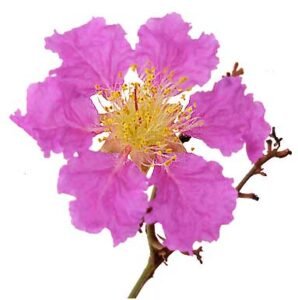Banaba Leaves Reduce Blood Sugar, Inflammation, and Obesity

Banaba (Lagerstroemia speciosa) is a type of crape myrtle tree with leaves that possess medicinal powers. Banaba leaves reduce blood sugar, inflammation, and obesity. Herbalists in Southeast Asia, particularly the Philippines, use banaba leaves to treat diabetes, and have for centuries. NutraTea herbalists formulated the tea blend NutraGlycemia with banaba leaves to minimize blood glucose imbalances and regulate lipid levels, while managing insulin sensitivity and sugar cravings. Another tea containing banaba leaves is NutraUric, a blend of natural diuretics that help ease joint swelling, flush out uric acid, and minimize inflammation and discomfort.
Banaba leaves contain:
- corosolic acid
- tannins
- flavonoids
- Magnesium, zinc, iron
- glycosides, sugars, proteins, steroids, and saponins.
Blood Sugar Balancing Banaba
Banaba leaves are used to help treat type II diabetes. The leaves are hypoglycemic because they reduce the amount of sugar in the blood. Their constituents stimulate the pancreas to produce insulin. Insulin moves glucose (a sugar) from the bloodstream into the body’s cells to make energy. Without enough insulin, glucose builds up in the blood rather than getting into your cells to provide energy. This causes high blood sugar, which can eventually cause type II diabetes. Banaba leaves are composed of 13% tannins. Tannins behave like insulin, stimulating glucose transportation in the body.
The leaves are also rich in corsolic acid, which works as an “insulin sensitizer,” enhancing cellular uptake of glucose and decreasing blood sugar levels in humans within an hour. NutraGlycemia is a tea blend formulated to help people with high blood sugar regulate their glucose levels. Thanks to its banaba leaf content, the tea has the potential to help reduce a person’s dependence on insulin injections.
Banaba Fights Obesity
Obesity is a high-risk factor for people with type II diabetes. Banaba leaves are anti-adipogenic; they slow the process by which fat-laden cells develop and accumulate as adipose tissue throughout the body, as subcutaneous fat and as depots. Obesity often involves hyperlipidemia, or high concentration of fats in the blood. Banaba leaves lower levels, decrease triglycerides, and decrease total cholesterol levels. In consequence, the leaves lower blood pressure, and are characterized as de-obstructive in effect. The constituent corosolic acid is at least partially responsible. NutraGlycemia helps lower lipid levels and total cholesterol, supporting healthy weight management.
Banaba Lowers Inflammation
The leaf of the banaba tree contains antioxidants that can help combat oxidative stress and inflammation in the body. This reduces swelling around inflamed joints and injuries and reduces pain. Banaba leaves are diuretic and purgative, reducing buildup of fluids and waste compounds like uric acid. If too much uric acid stays in your body, hyperuricemia occurs, in which uric acid clumps in sharp crystals. The crystals settle in the joints and cause a painful for of arthritis called gout. They can also build up in the kidneys and form kidney stones. NutraUric is a tea blend containing banaba that flushes waste compounds like uric acid out of the body.
More about Banaba
Banaba is a deciduous tropical flowering tree, one of fifty species of Lagerstroemia. The species name speciosa means showy or spectacular. It’s also known as “crape myrtle,” referring to its flowers that resemble delicate crape paper. Its old leaves and ripe fruit are considered to yield the greatest insulin-like effect. Twenty grams of old leaves or fruit, dried from one to two weeks, in the form of 100 cc of 20% decoction was found to have activity equivalent to 6 to 7.7 units of insulin. The new leaves are bright orange or red and are thought to contain higher levels of corosolic acid. In Hindu mythology, the Banaba tree flowers and prosperity reigns when people worship Lord Brahma.
NutraGlycemia and NutraUric Tea Blends




